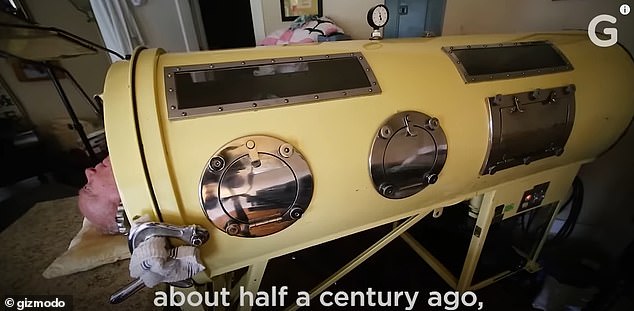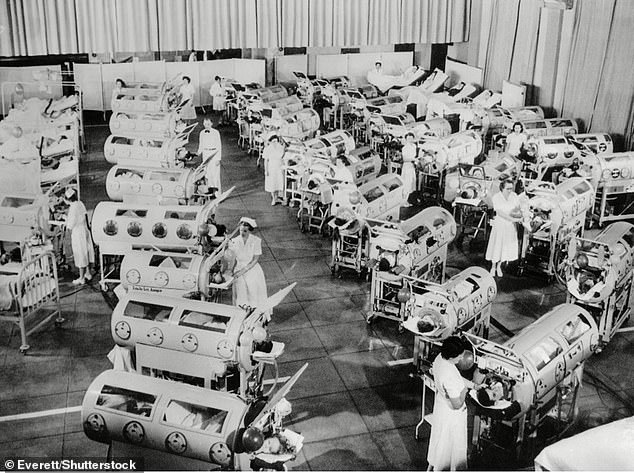Man who’s lived in an iron lung for more than 70 years after being struck down by polio shared video of what happens when it starts to break
Man who has lived in an iron lung for over 70 years after being stricken with polio shared video of what happens when it starts to break
- Paul Alexander, 77, of Dallas, Texas still needs an iron lung to help him breathe
- Since he contracted polio in 1952 at the age of six, he has been in an iron lung
A man who has lived in an iron lung for more than 70 years has posted a video online showing what happens when it begins to break.
Paul Alexander, 77, of Dallas, Texas, has had his body encased in an iron lung since he was stricken with polio in 1952 at the age of six.
The tank mask was considered a medical marvel at the time, as it allowed polio patients to breathe.
The ventilator, which resembles a terrifying metal box, requires patients to lie down inside, with the device strapped tightly around their necks.
It works by creating a vacuum to mechanically draw oxygen to the lungs in patients whose central nervous system and respiratory function have been destroyed by polio.
A YouTube video made by Gizmodo revealed what happens to the machine when it starts to break

Mr. Alexander faced a crisis in 2015 when the machine began to malfunction, and when manufacturers stopped producing the iron lung in the 1960s
A YouTube video made by Gizmodo revealed what happens to the machine when it starts to break.
Mr Alexander faced a crisis in 2015 when the machine began to malfunction, and when manufacturers stopped production of the iron lung in the 1960s, a new ventilator was probably out of the question.
Fortunately, Brady Richards, who runs the Environmental Testing Laboratory and is an avid hobby mechanic, saw the call and got in touch to help Paul.
Mr. Richards was able to fix up the machine in a garage after the garage Paul originally lived in fell into a worryingly bad state.
The video shows Brady’s concerns about a machine he said was extremely “worn out” and was “leaking a lot,” meaning he couldn’t “produce enough pressure.”
Despite facing serious challenges in building a refurbished machine due to a lack of parts, a refurbished machine was successfully made for Paul, who said his ‘life would be ruined’ if it wasn’t for Brady been.
In an inspiring way, the polio survivor has not let his iron lung stop him from living his life.
Paul pursued his dreams of becoming a lawyer, representing clients in court in a three-piece suit and an adapted wheelchair that propped up his paralyzed body.

When the iron lung was manufactured it was believed to be a medical marvel, but modern ventilators have since replaced the large device
Throughout his life he has been on airplanes, lived alone, fallen in love, prayed in church, visited the ocean and even ended up in a strip club.
Paul has even published his own memoir entitled “Three Minutes for a Dog: My Life in an Iron Lung.”
The 155-page memoir was carefully drafted and took five years to complete; Paul wrote each word with a pen on a stick in his mouth.
